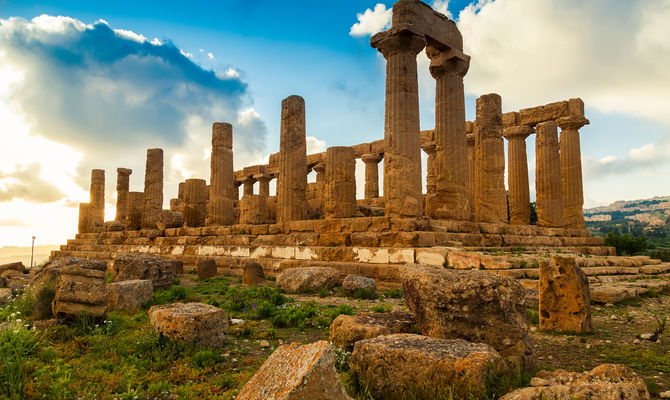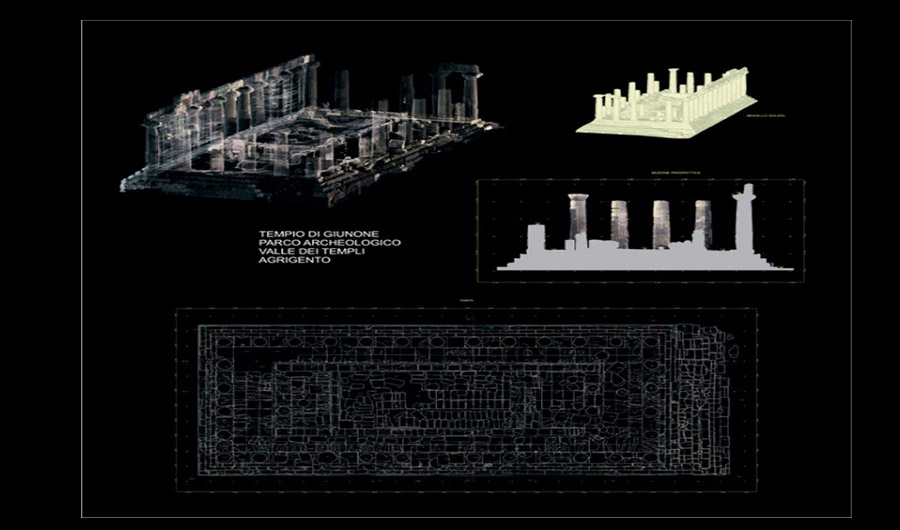


The temple of Hera Lacinia, also known as the temple of Juno (from the Roman name of the goddess) or temple D, is a Greek temple of the ancient city of Akragas located in the Valley of the Temples in Agrigento.
"We soon arrived at the eastern end of the city, where the ruins of the temple of Juno fall every year more and more in ruins due to the corrosion produced by the air and the weather on the porous stone."
(Johann Wolfgang von Goethe, Journey to Italy)

It was built in the second half of the 5th century BC, around 450 BC. and belongs as an epoch and as a style to the classical Doric period. Signs of the fire of 406 BC have been detected. after which it was restored in Roman times, with the replacement of the original clay tiles with other marble and with the addition of the inclined plane to the eastern front.

The building is a peripteral Doric temple with 6 columns on the short sides (hexastyle) and 13 on the sides, according to a canon derived from the models of the motherland and also used for the "twin" temple of Concordia with which it is also united by the general dimensions and the almost standardized measurements of some construction elements. The overall dimensions are approximately 38.15x16.90 m.

The front has slightly different wheelbases with the contraction of the terminal ones and the emphasis of the central one. The peristyle of 34 columns high m. 6.44 and made up of 4 superimposed drums, it rests on a crepidoma of four steps. Built on a spur with a rise, it is largely artificially constructed.
The interior consists of a naos without internal colonnade, of the double type in antis, with a symmetrical pronaos and opisthodomos, both framed by groups of two columns (distyles). Two stairs for inspection of the roof or for reasons of worship were present in the separation wall between naos and pronaos (diaphragm).
Currently the northern colonnade with the epistyle and part of the frieze is preserved, while the colonnades on the other three sides are only partially preserved (4 columns are missing and 9 are dismantled), and without an architrave. Few are the remaining elements of the cell of which the lower part of the masonry that delimits it remains.

The building was thus reconstructed by anastylosis from the eighteenth century to today. In front of the main (eastern) front there are notable remains of the altar.
VIRTUAL VISIT on Google Arts and Culture >
Juno Temple
Address: Via Panoramica Valle dei Templi, 92100
Phone: 0922 183 9996
Site:
https://www.parcovalledeitempli.it/Location inserted by
Cinzia Crespi